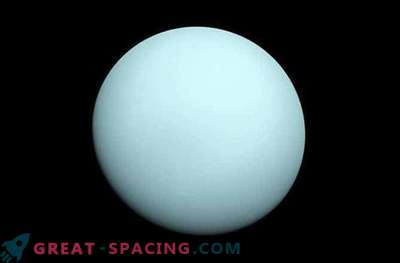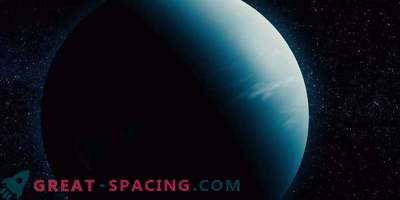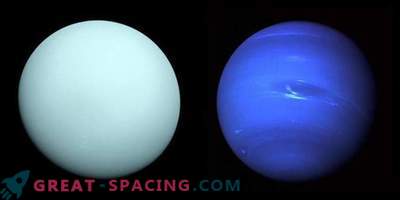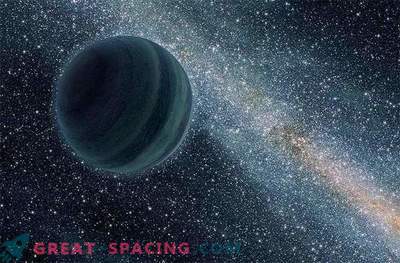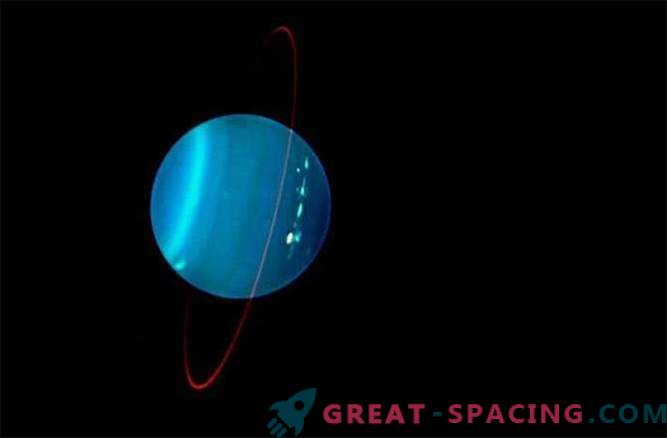
For the first time, astronomers have announced the discovery of an exoplanet, which they believe is similar to one of the ice giants of the solar system - Uranus or Neptune.
In a study published in The Astrophysical Journal, Radek Poleski and his team at Ohio State University identified an alien world revolving around a binary star system located 25,000 light-years from Earth in the direction of the constellation Strele. The binary system consists of a star, which has two thirds of the mass of our Sun, and its stellar partner, which has only a sixth of the solar mass. Exo-Uranus revolves around a larger star.

On January 25, 1986, Voyager-2 recorded this review of Uranus as it moved toward Neptune. But even on the lighted edge, the planet has managed to preserve its pale green color. Color is formed due to the presence of methane in the atmospheric layer that absorbs red wavelengths.
However, at first glance, this new world does not look like Uranus, since it is four times more massive than the planet that we know and love. But the clue is that this exoplanet has a similar orbit to Uranus and characteristics that can make it the first planet that has the composition of Uranus. However, it is impossible to verify this in practice, since this new world is too far from us to study its chemical composition. Uranus and Neptune are different from the other two gas giants of the Solar System (Jupiter and Saturn) in their thick atmospheres there is a huge amount of methane ice, which gives these planets a bluish tint. The orbital distance of Uranus and Neptune caused these planets to follow an icy evolution.
“No one knows exactly why Uranus and Neptune are on the outskirts of the solar system, whereas our models show that they should form closer to the Sun,” said Andrew Gould, a research scientist from Ohio. "One of the hypotheses is that they were formed much closer, but then were“ shifted ”by Jupiter and Saturn to the solar system shutters.”
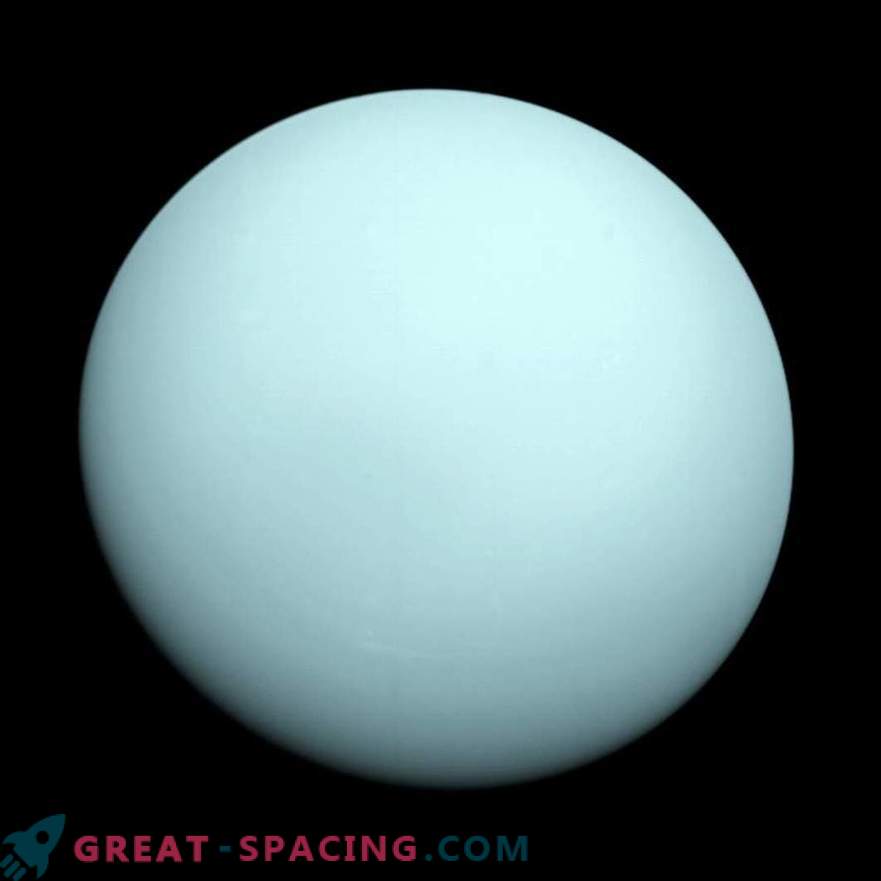
In January 1986, Voyager-2 approached for a rapprochement and captured the 7th planet from the Sun - Uranus.
This distant exo-Uranus was discovered when the planet moved in front of its parent star. At the same time, the gravitational field, which deforms space-time, created the so-called microlensing effect.
Microlensing happens by chance and can happen anywhere in the galaxy, so we have a network of observatories around the world that are constantly looking for these rare phenomena. In this case, the 1, 3-meter telescope of Warsaw, located in the observatory of Las Campanas, Chile, identified two separate microlensing events - one in 2008, which showed the presence of a major star and hinted at the presence of the planet, the second event in 2010, when it was confirmed the presence of an exo-planet and a smaller stellar partner. By combining the data obtained during the observation of two separate microlensing events, the team was able to measure the mass of two stars and calculate the mass of the exoplanet, as well as its orbital distance.
Interestingly, the presence of this smaller stellar partner can help explain the origin of this exo-Uranus and in turn give clues to how our Uranus and Neptune migrated to more distant orbits.
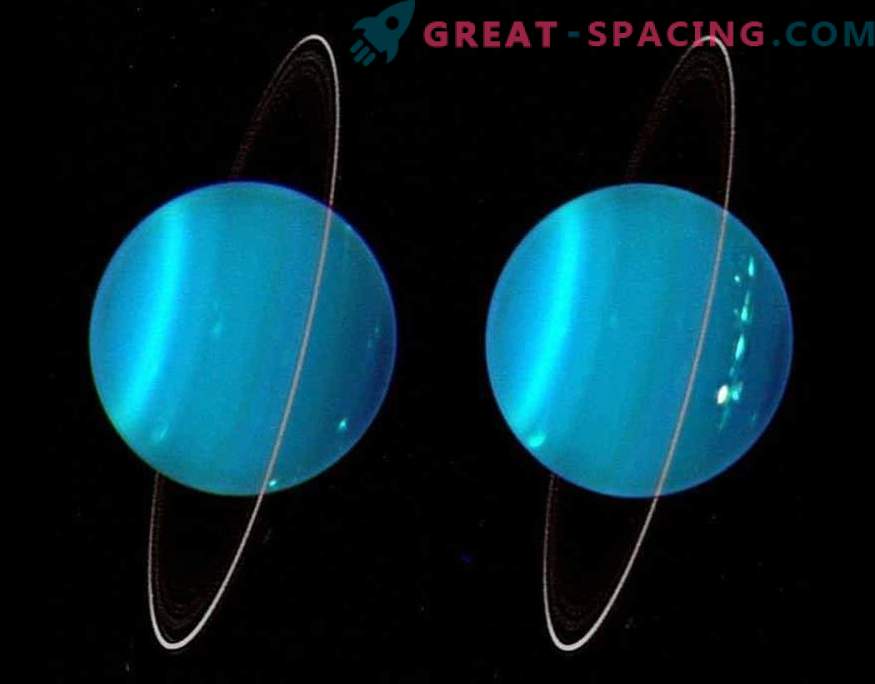
On July 11-12, 2004, Keck's telescope managed to obtain an infrared composite image of both hemispheres of Uranus. Blue, green and red colors were obtained using 1.26 micron, 1.62 micron and 2.1 micron near infrared waves. Keck is responsible for financing the work of a special eponymous fund, as well as grants from NASA. The Observatory operates on the basis of the California Association of Research CARA with the support of the California Institute of Technology, the University of California, and the National Aeronautics and Space Administration.
Maybe the existence of this exo-Uranus is due to the presence of a second star, "continued Gould." Maybe a kind of push is needed to form such planets as Uranus and Neptune. "
"Only microlensing can help detect these cold ice giants, such as Uranus and Neptune, which are located far from their parent stars," says Poleski. "This discovery shows that using the microlensing effect, you can detect planets in very far orbits." This distinguishes this method from other methods of searching for exoplanets, such as the transit method (used by the NASA Kepler space telescope, capable of detecting small worlds rotating near parent stars) and the radial velocity method (based on the oscillations of stars caused by the gravitational attraction of massive planets rotating in short orbits). "We were lucky that we could see the signal from the planet, the parent star and the companion star. If the orientation was different, we would see only the planet, and probably would call it a free-floating planet," added Gould.
